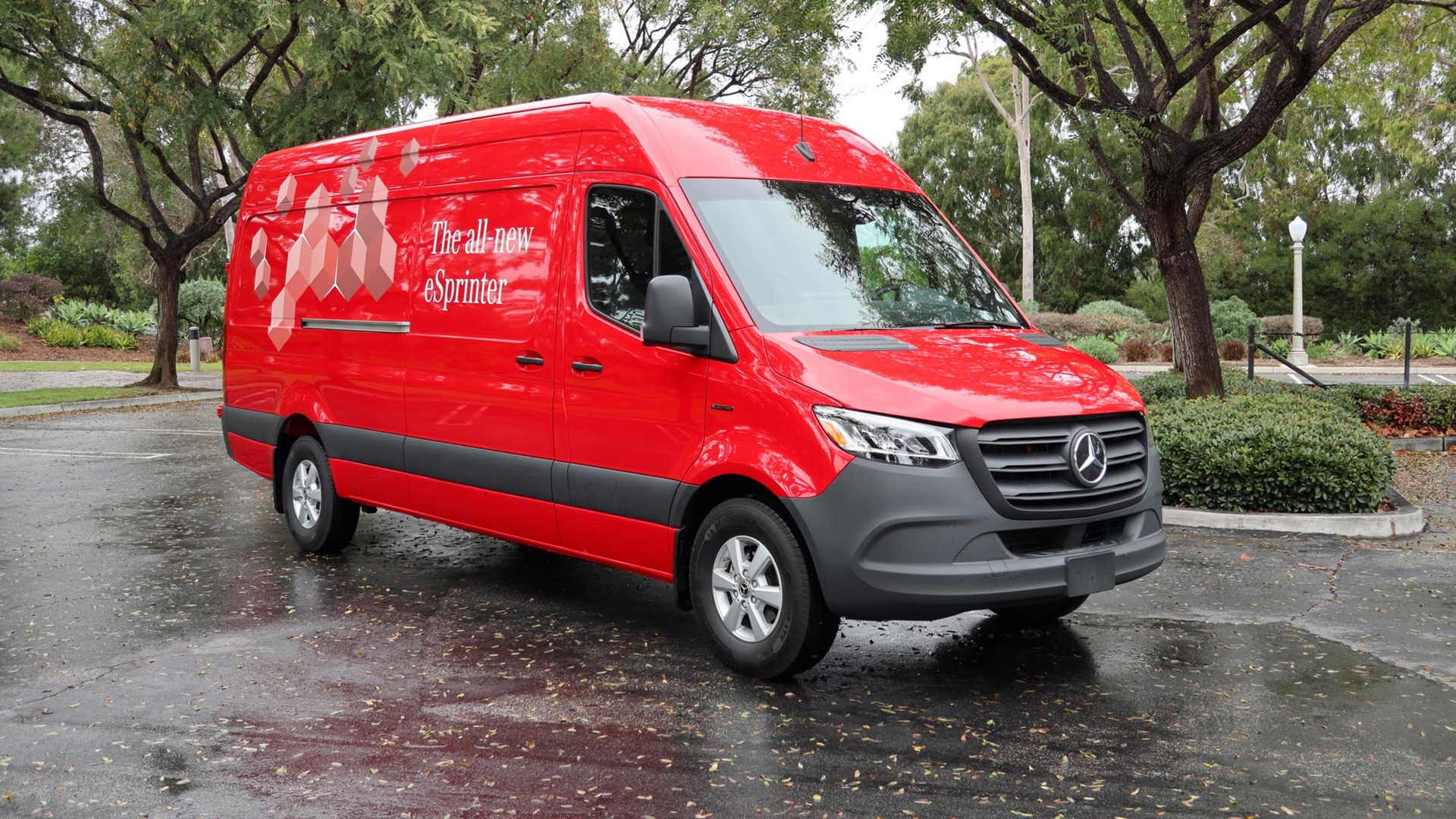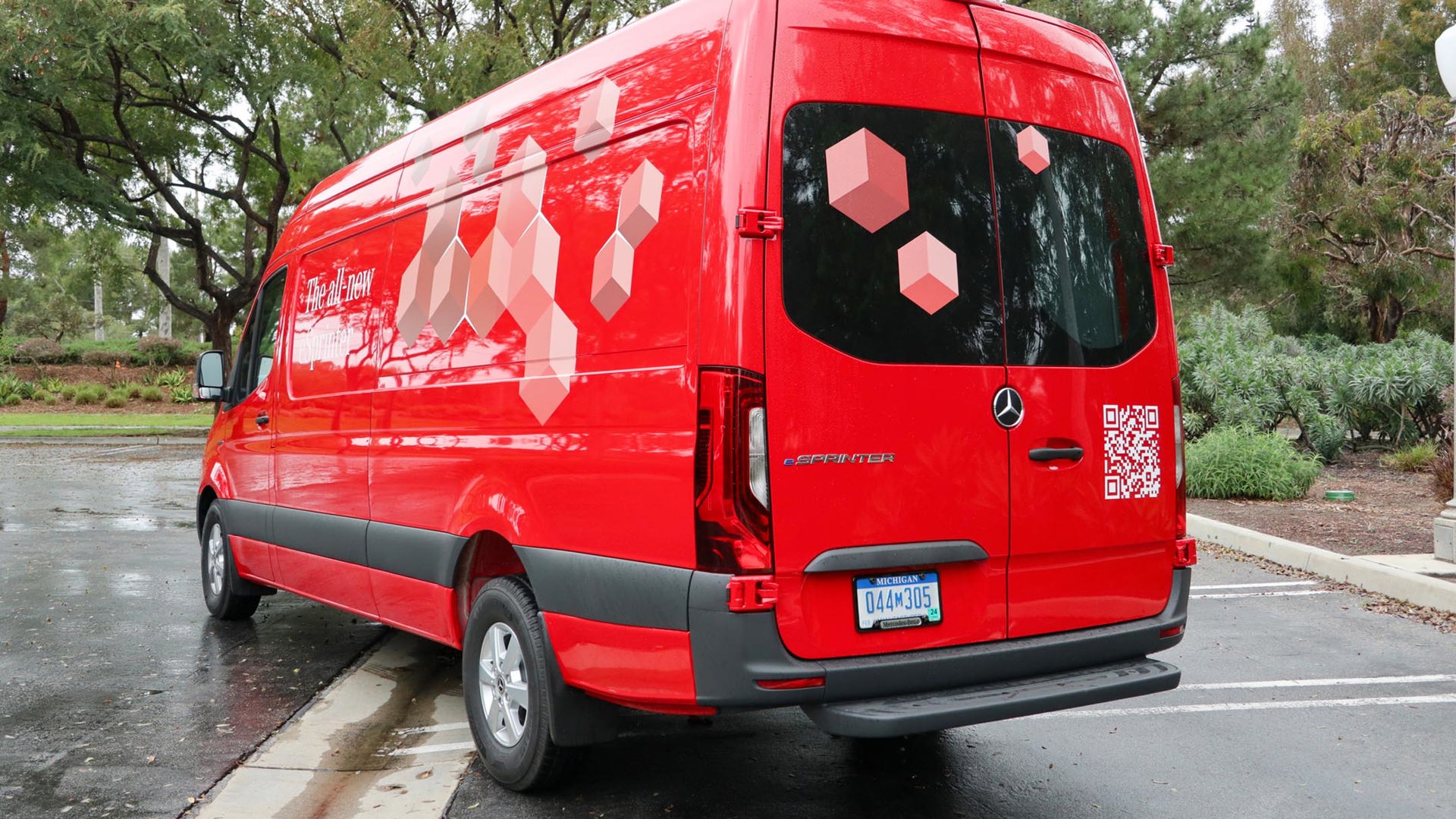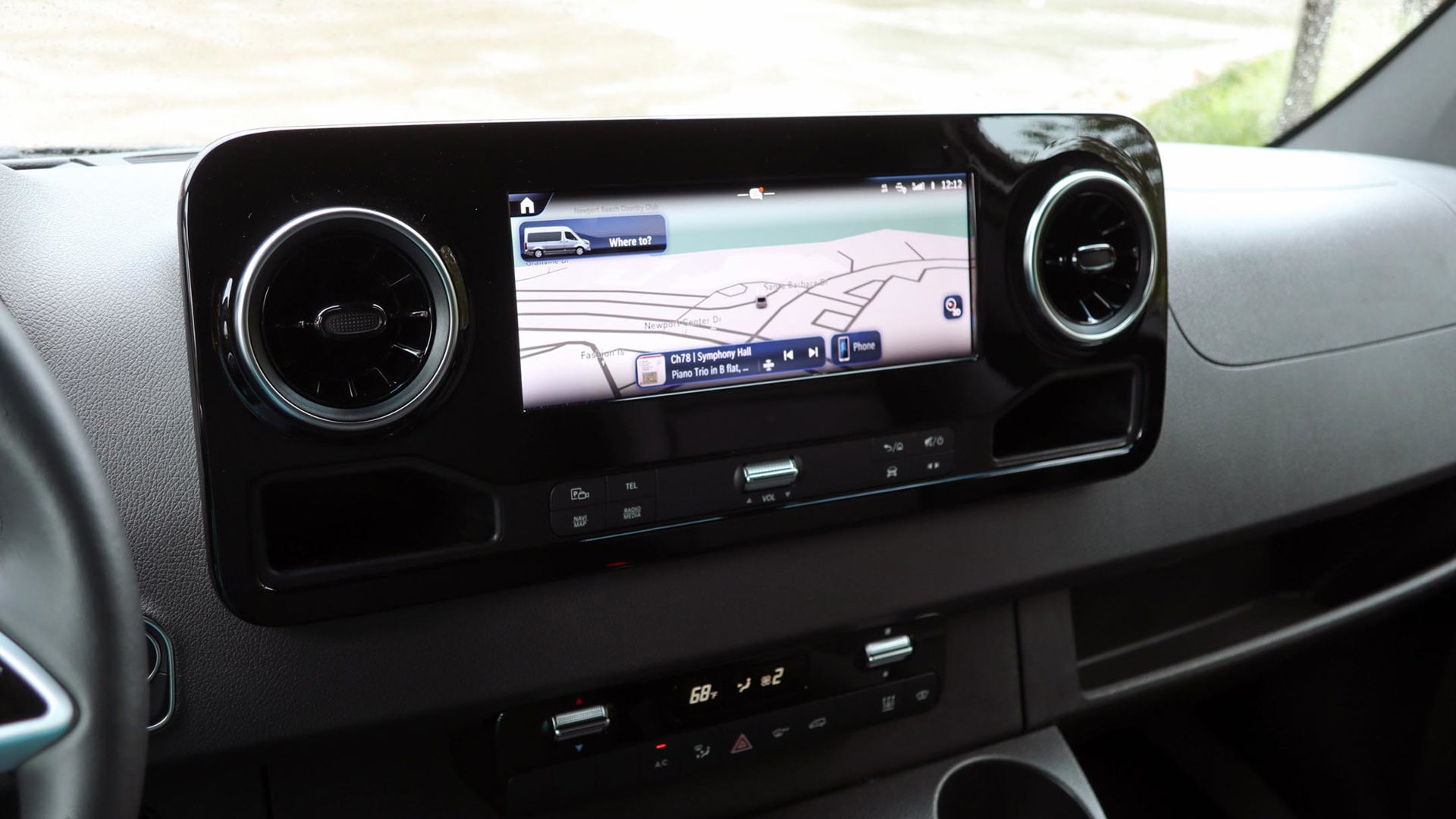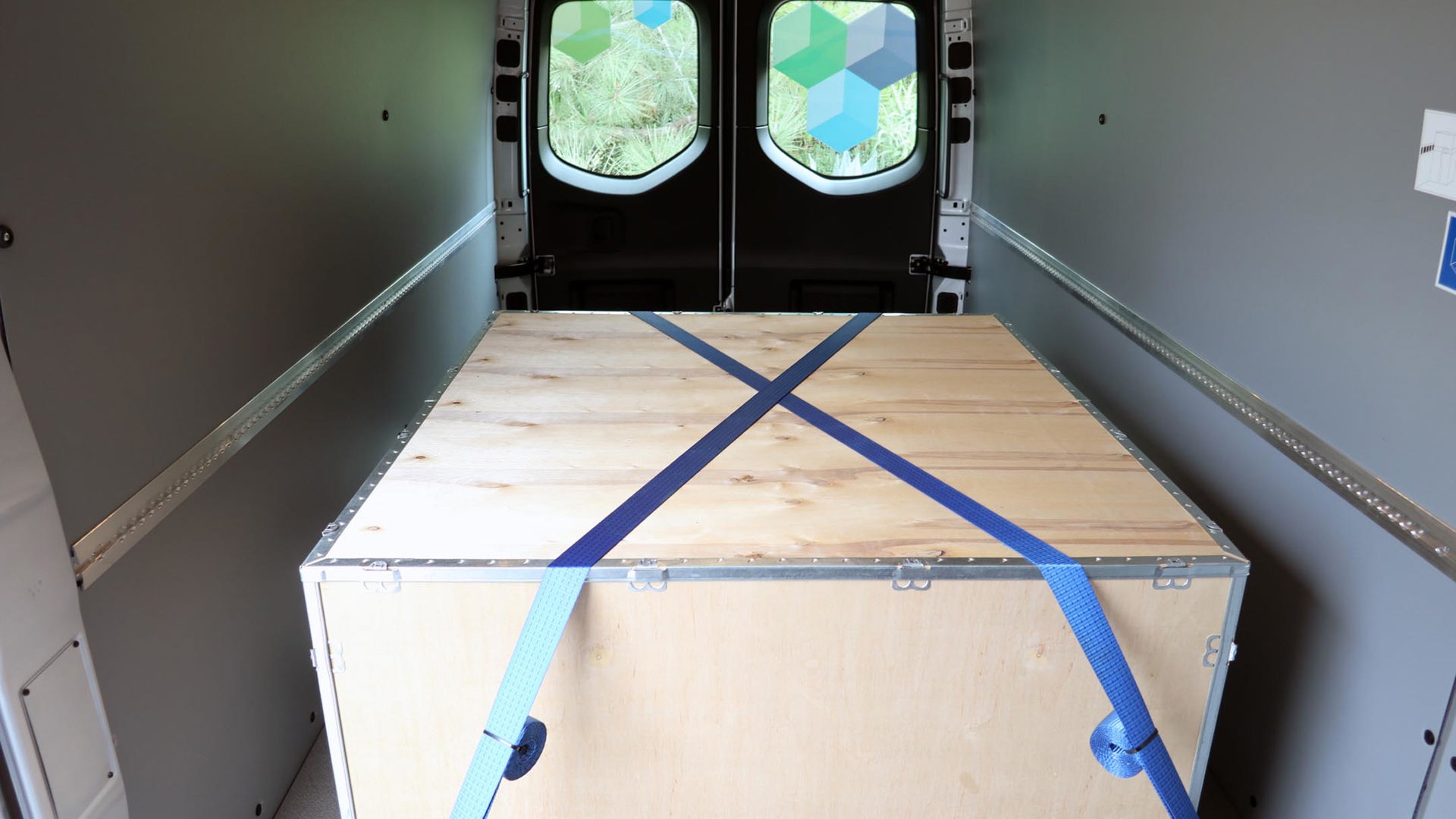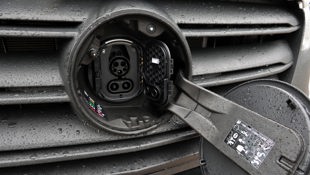For most drivers, a cargo van is just the vehicle in front of you in traffic that you can’t see around, or something you’re waiting on to deliver your parcel.
But they’re a big deal for commercial fleets, and automakers are introducing all-electric ones including this one, the 2024 Mercedes-Benz eSprinter. It’ll be sold alongside the conventional Sprinter, which uses a four-cylinder diesel engine.
A Sprint Through History
The Sprinter arrived in North America in 2001, marking the first time we’d seen a European-style van tall enough for adults to stand up inside. It was also badged as a Dodge Sprinter and, in the United States, as a Freightliner.
It was the first tall van, but it’s no longer alone. It now faces off against the Ford Transit and Ram ProMaster – the former already available as an electric vehicle (EV), and the latter offering a battery-based powertrain soon. General Motors (GM) builds the gas-only Chevrolet Express and GMC Savana, but recently started making the all-electric Brightdrop delivery van in Ontario. Several are on duty in California, and when a driver pulled up in one at a light, we nodded at each other in plug-in solidarity.
Those brands and more used to sell smaller work vans in Canada, including the midsize Mercedes Metris, but all of them have been discontinued in recent years (along with Nissan’s large and small vans). Starting in 2026, Mercedes will use new modular architecture to build midsize and large electric vans for global markets, although whether we’ll get a smaller one here remains to be seen.
Powering the eSprinter
For the North American market, the 2024 eSprinter is built alongside the diesel version in South Carolina. It’s basically the same van with different propulsion – it still has a fuel-door flap, although there’s nothing behind it. The charging port is behind the badge on the grille.
The electric motor is mounted on the rear axle. The standard motor puts out 100 kW (136 hp), while I drove the optional 150-kW (204-hp) motor. Torque can go hit 295 lb-ft, although that figure is achieved using a boost it can sustain for around 30 seconds. Top speed is 120 km/h.
The 113-kWh battery is mounted under the floor and doesn’t affect cargo capacity. It’s made with lithium iron phosphate and doesn’t contain any cobalt or nickel. Its official Canadian range hasn’t been announced, but it’s rated up to 440 km in European testing. A smaller battery will be offered in the U.S. but not in Canada. The onboard charger is 9.6 kW; standard DC fast-charging is 50 kW, while 115 kW is optional.
On the Road
The eSprinter rides and drives very well. It’s stable around corners and handled confidently on a very windy day; the low-mounted battery weighs 456 kg (1,007 lb), which lowers the centre of gravity. The test vans had an additional 200 kg (441 lb) of cargo on board. Maximum payload is 1,190 kg (2,624 lb).
Torque is immediate, and a firm foot on the pedal gives satisfying acceleration, but it’s easy to modulate for smooth driving in city traffic. The steering is light and the turning circle is tight, a necessity for long days of navigating driveways and loading docks.
There are three drive modes. Comfort gives full power and performance, while eco limits power to 100 kW (134 hp) to increase range. Maximum range mode drops that to 80 kW (107 hp) and limits some features, such as climate control. Those last two aren’t much fun to drive, but they serve a purpose.
Regenerative braking can be adjusted by paddles on the steering wheel, from very strong to none, along with an automatic function that optimizes it to driving conditions. The strongest setting slows the van considerably, but it’s not capable of one-pedal driving with a complete stop without using the brake pedal.
A Few Features
The Sprinter has come a long way from its initial introduction as a basic box with a steering wheel. The eSprinter’s standard features include a heated driver's seat, cruise control, multifunction steering wheel, two USB-C charging ports, connected services trial, and a back-up camera.
A 10.25-inch touchscreen can be added, which includes Mercedes-Benz User Experience (MBUX) with voice control that starts listening when you say, “Hey, Mercedes.” Other options include a power sliding door, heated windshield, lightweight plastic floor and washable wall panels, a heated steering wheel, power-folding mirrors, automatic climate control, navigation, and a digital rearview mirror, which was very handy since my van had a partition behind the seats, as was its blind-spot monitoring system.
Canadian Pricing
The eSprinter will launch with a long wheelbase and high roof, with more configurations to follow. It starts at $97,990, and when all delivery and fees are added in, it’s $107,273. The high-output version is $108,783 all-in. In contrast, a long-wheelbase, high-roof diesel Sprinter starts at $66,740 before fees. Mercedes-Benz Canada expects that the price may be offset by federal EV incentives for medium- and heavy-duty zero-emission vehicles of up to $10,000, plus any applicable provincial incentives, depending on where the fleet is located.
The eSprinter’s main rival is the Ford E-Transit. It comes in three lengths and three roof heights, and the 2023 version starts at $70,450 before a $2,995 delivery charge and other fees. Price is in its favour, but it has a 68-kWh battery that, in the low-roof version, is rated at 203 km, less than half of the eSprinter. Ford also has the advantage of a larger dealer network for sales and service.
Final Thoughts
Electric commercial vehicles like the 2024 Mercedes-Benz eSprinter are the long game. Companies typically update their fleets when individual vehicles wear out, so any EV adoption will likely be gradual. Electric vans can potentially be a good fit because many have set routes, and come back to a central location each night where they can charge. They also require less maintenance than gasoline or diesel vans; and there’s even the benefit of looking “green” to one’s customers. On the down side, they’re still expensive and require the company to install charging infrastructure. It’ll be interesting to see how your parcel will be delivered to you over the coming years.
